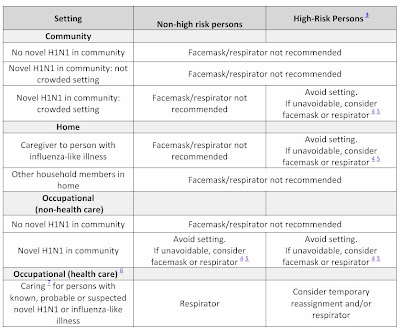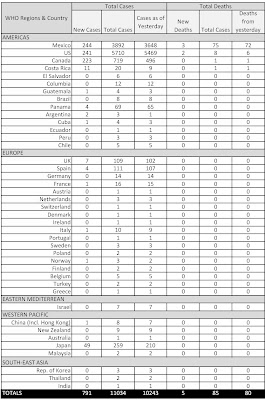The next update will be on Tuesday, June 2, at 8:30 PST. GMS will now be publishing our updates on Tuesdays and Thursday. This is result of many of the leading authorities decreasing their frequency of informational releases.
The WHO Pandemic Alert level remains at Phase 5.
Influenza A (H1N1) Cases and Deaths by Country (as of 8 AM PST, May 29th)*
Lab confirmed cases and deaths have been provided by the WHO’s Influenza A (H1N1) – Update #41.Local/National News
- On May 28th, the Public Health Agency of Canada (PHAC) did not revise the country’s confirmed influenza A (H1N1) case total. PHAC releases revised case totals on Mondays, Wednesdays, and Fridays. Canada’s total case count currently stands at 1,118 with 43 hospitalizations and two deaths.
- The latest results of confirmed swine flu cases in Ontario show a 41% increase (from 352 to 495 cases from Monday to Wednesday) in the number of infected people, the majority of them in the Greater Toronto Area. Health officials stressed that the increase in numbers is due to more monitoring, testing, and clearing of a backlog of cases. The province is currently recommending only testing for the virus for people who are severely ill. Toronto Star
International News
- Chile reported 46 new cases of novel H1N1 flu, raising its total to 165, and officials said the virus is firmly established in the country. The virus, which was first confirmed in Chile 10 days ago, now accounts for 90% of flu cases in the country and may be replacing seasonal flu, officials said. The Chilean health ministry said it is changing its H1N1 strategy from containment to mitigation, and has canceled airport screening. Bloomberg report
- A group of students and teachers from a Maryland private school have been quarantined in China because of H1N1 flu concerns. The Chinese government has confined 21 students and three teachers to their hotel rooms in Kaili, China, because a passenger on their plane to China was suspected of having swine flu. CNN
Vaccine News
- On Thursday, Australia's government ordered 10 million doses of H1N1 flu vaccine from pharmaceutical company CSL Ltd. The supply would cover just less than half of Australia's 21 million people, and Health Minister Nicola Roxon said medical authorities would prioritize which areas and people would most need the vaccine. Reuters
- On Thursday, Dr. Anne Schuchat, the U.S. Centers for Disease Control and Prevention's interim deputy director for science and public health program, said that a vaccine for the novel H1N1 flu virus could be ready in October, if research and testing proceed on pace this summer. However, it is still not clear whether such a vaccine will be needed, Schuchat said. HealthDay News
Latest Guidance from the US CDC, WHO, PHAC and BCCDC
- Yesterday, the U.S Center for Disease Control and Prevention released Post-mortem Care and Safe Autopsy Procedures for Novel H1N1 Influenza.
Today’s Key Question
Is the U.S. Centers for Disease Control and Prevention (CDC) too optimistic about the flu peak?On May 26th, the CDC suggested that the novel H1N1 flu outbreak in the United States may have reached peak levels. However, Donald Olsen, a New York City-based epidemiologist and head of the influenza monitoring project at the International Society for Disease Surveillance (ISDS), disagrees.The CDC based their assessment on influenza-like-illness (ILI) reported at outpatient clinics across the country, and found a drop in seven out of nine regions, the two exceptions being New York City and Boston. The ISDS however, collects their own data, and are able to analyze more subtle measurements than the CDC.
Olson believes that the initial news of the swine flu outbreak led many people, who would have otherwise stayed home, to seek medical care. As the general fear surrounding swine flu has somewhat subsided, Olson suspects that fewer of these “worried-ill” are seeking medical care, leading to a decline in the reported number of ILI cases.
Although the CDC did note mild increases in flu activity in Boston and New York, Olson believes that his more carefully analyzed data projects more substantial increases. Furthermore, the CDC notes a decline in ILI cases in Seattle at week 20, which is the opposite of what the ISDS has found.
Olsen admits that there is a lot of uncertainty involved in dealing with the data collected thus far and admits that the measures are not perfect. However, he asserts that it is important that the weaknesses in the analyses be found. ScienceInsider


































